Reference of the picture: Decontamination Archive Site
Hello, everyone. My name is Daichi, an expert providing the information on the radiation issues in an easy-to-understand manner.
In the previous article, temporary storage sites used in the decontamination activities are covered, especially focusing on their structure and facilities.
Regarding the temporary storage site, this article will respond to the following question:
– How are temporary storage sites managed?
Table of contents of this article
- (Management in ordinary and emergency situations) Management of temporary storage sites (Vol. 2)
- Ordinary situation
- Visual checkup
- Monitoring of air dose rate
- Checking water collection tanks
- Monitoring of radioactivity in groundwater
- Environmental maintenance
- Emergency situation
- Heavy rain
- Heavy snow
- Strong wind
- Earthquake
- Summary
I have been involved with the radiation-relevant issues, like the policy on the decontamination activities and the management of the Interim Storage Facility, after the accident of the Fukushima Daiichi Nuclear Power Plant in 2011.
I received a doctorate in the field of radiation, while working in Fukushima.
(Management in ordinary and emergency situations) Management of temporary storage sites (Vol. 2)
As covered in the previous article, temporary storage sites are places to store temporarily soil and waste arising from decontamination activities till further procedures.
In the meantime, the soil and waste need to be stored in a safe manner, and this article covers management of the temporary storage sites, both under ordinary situations and emergency situations, when natural disasters occur.
Implementers of decontamination have been in charge of the management of the temporary storage sites for each decontamination area:
– The Special Decontamination Areas: the national government (the Ministry of the Environment)
– The Intensive Decontamination Areas: mainly municipal governments
(In fact contractors entrusted by each implementer have conducted on site the management of the temporary storage sites.)
For more information on each area, please visit this article.
Ordinary situation
In ordinary situation, at least once a week checkup is supposed to be implemented on-site of temporary storage sites.
In the following parts of this article 5 points will be covered as main examples of the checkup.
Visual checkup

During the checkup, together with other points mentioned below, workers patrol around the premise of temporary storage sites and check whether some problems happen or not.
During the visual checkup, there are a number of points to be cared about, but the followings are examples.
– Fence (e.g.: evidence of animal intrusion)
– Cover sheet (e.g.: damage caused by animals, aging deterioration)
– Water erosion on the premise (e.g.: after rainfalls)
Monitoring of air dose rate
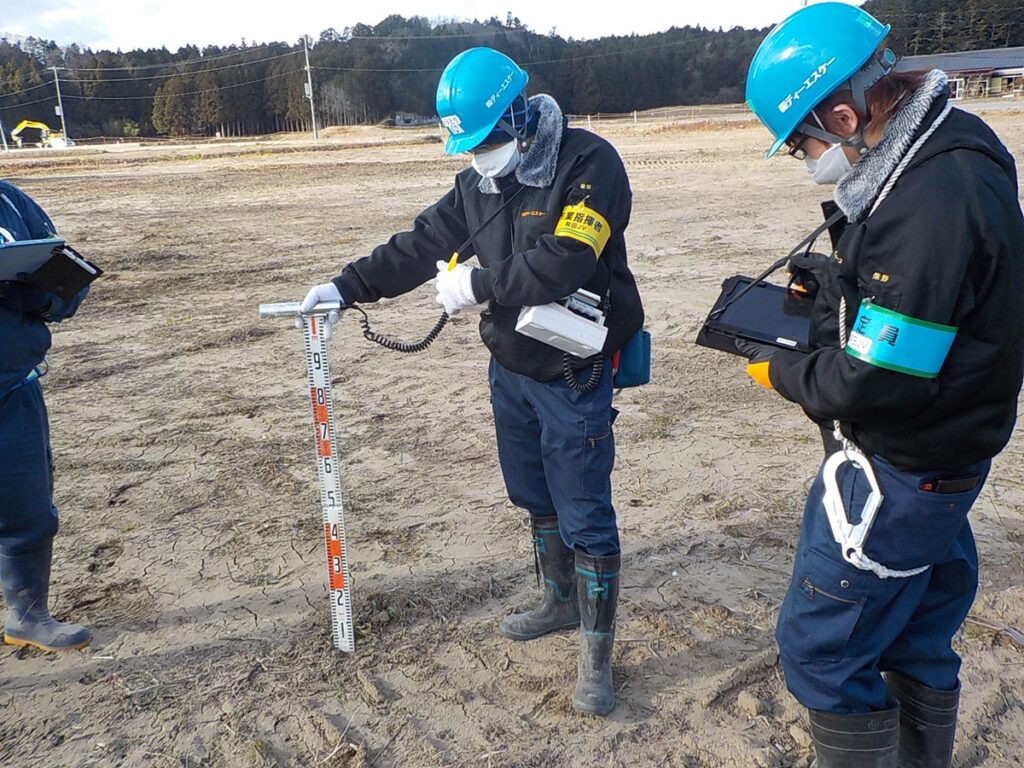
Reference of the picture: Decontamination Archive Site (the picture above represents monitoring in farmland)
As covered in the previous article, shielding bags are used, because removed soil and waste are used in the temporary storage sites.
Basically once a week, air dose rate (ambient dose equivalent) is monitored to confirm that there are no problematic impact to the surrounding environment caused by the removed soil and waste.
Monitoring of air dose rate is implemented at the points of border between premise of temporary storage sites and outside land, and the monitoring is repeated completely in a same manner (e.g.: points, height, direction), to confirm that there are no increase of air dose rate, compared with previous data.
The results of monitoring are usually shown at the entrance of the temporary storage sites, together with sign mentioned in the previous article, to make people around the temporary storage sites informed of the situation.
Checking water collection tanks
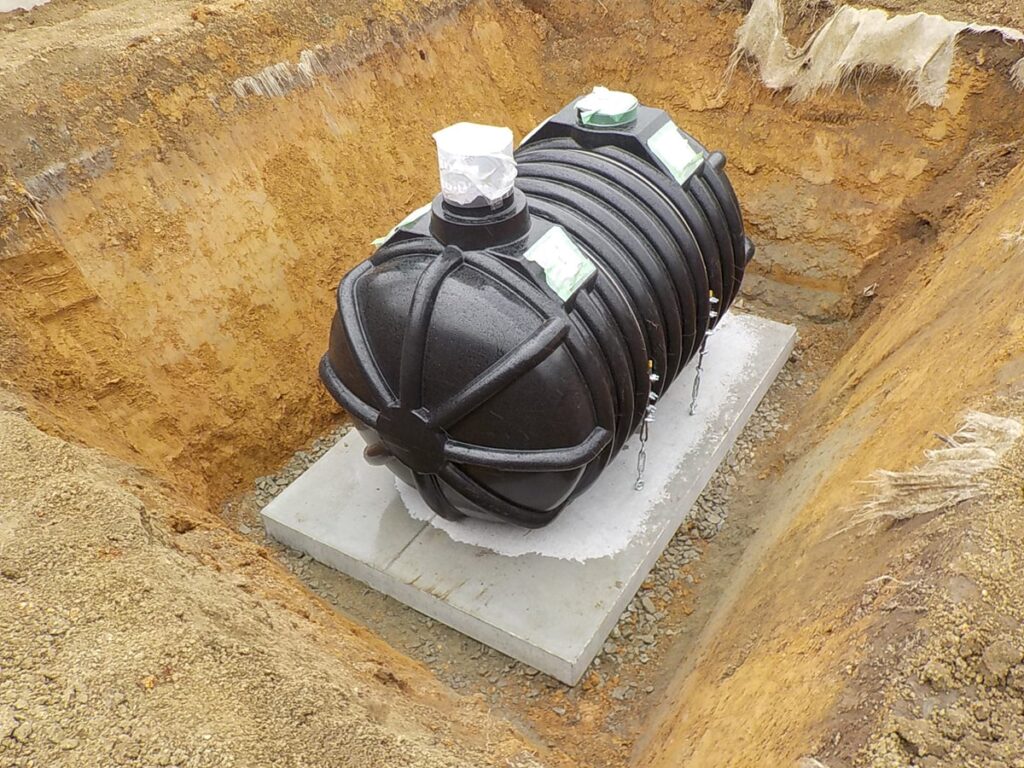
Reference of the picture: Decontamination Archive Site
Regarding the installation of water collection pipes and tanks, water level of the tanks is checked during the periodical check, as explained in the previous article.
If the water level is high, it could be possible for water to come into the piles, therefore further checkup and following necessary repairment could be needed.
In addition, radioactivity in water collection tanks is periodically monitored, so when water level of the tanks gets high to some extent, it is released into the environment after confirming that radioactivity is less than criterion.
Monitoring of radioactivity in groundwater
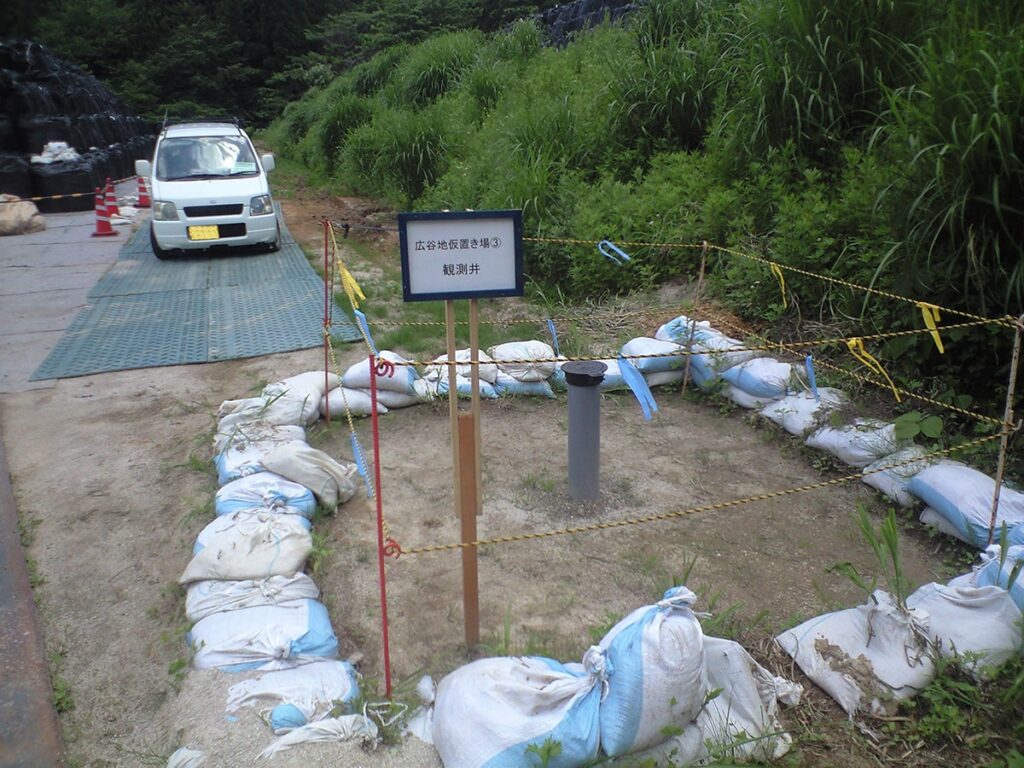
Reference of the picture: Decontamination Archive Site
Using the monitoring well of underground water mentioned in the previous article, underground water is sampled, usually once a month to confirm that radioactive material doesn’t flow into the underground water.
Environmental maintenance

This is not a measure relevant to removed radioactive materials, but a couple of times per year, grasses on the premise are mowed, and vines on the fences are also removed to maintain proper environment of the temporary storage sites.
This is a necessary measure for management of the temporary storage sites, but this periodical maintenance is important in order not to make adverse effect on surrounding farmlands, because most of the temporary storage sites are constructed on the farmlands, and usually there are a lot of farmlands around the temporary storage sites.
Emergency situation
So far management of temporary storage sites in ordinary situation has been covered, but in addition, management and checkup are implemented in emergency situation, especially natural disasters occur.
Heavy rain

Japan is often affected by heavy rain, especially in rainy season in June and July as well as typhoon season in autumn.
In addition, the amount of rainfall in an event has increased due to climate change, as we hear often the relevant words like ‘torrential rain’ or ‘training (technical term in meteorology)’.
Temporary storage sites are constructed outdoors, so they are often affected by heavy rain.
Once the container bags were flowed out of the temporary storage sites due to heavy rain.
To prevent the incidents from happening, shortly before typhoons come to the sites, measures are sometimes taken in advance in the temporary storage sites, which are adjacent to rivers, including fixing container bags using ropes and sheets.
You might think that the temporary storage sites should have been constructed away from rivers, but shortly after the decontamination started, it was difficult to find out places which accept their construction, therefore it can’t help but constructing temporary storage sites just close to rivers.
In the wake of incidents, container bags in these affected temporary storage sites were prioritized to be transported to the Interim Storage Facilities.
Of course checkups were conducted shortly after the heavy rain, by fully taking consideration of safety of workers to check something wrong had happened or not.
Heavy snow
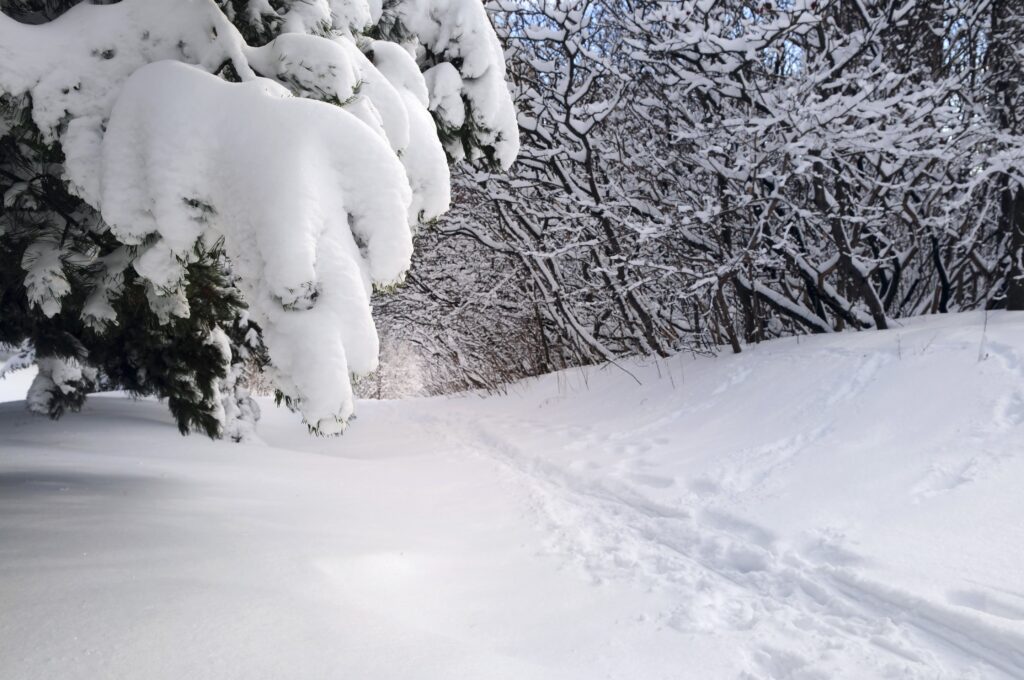
There are mountain areas in the Fukushima Prefecture, as well as other prefectures, which are often affected by heavy snow in winter.
Sometimes piles in temporary storage sites, where soil and waste arising from decontamination activities are stored, are affected by snow, especially for cover sheets and fences.
Sometimes temporary storage sites become inaccessible due to heavy snow, therefore it is important to prepare in advance before it goes into snow season.
Moreover, after snow melts, as is the case with rain, premise of the temporary storage sites could be eroded by waterflow, that needs to be cared about.
Strong wind
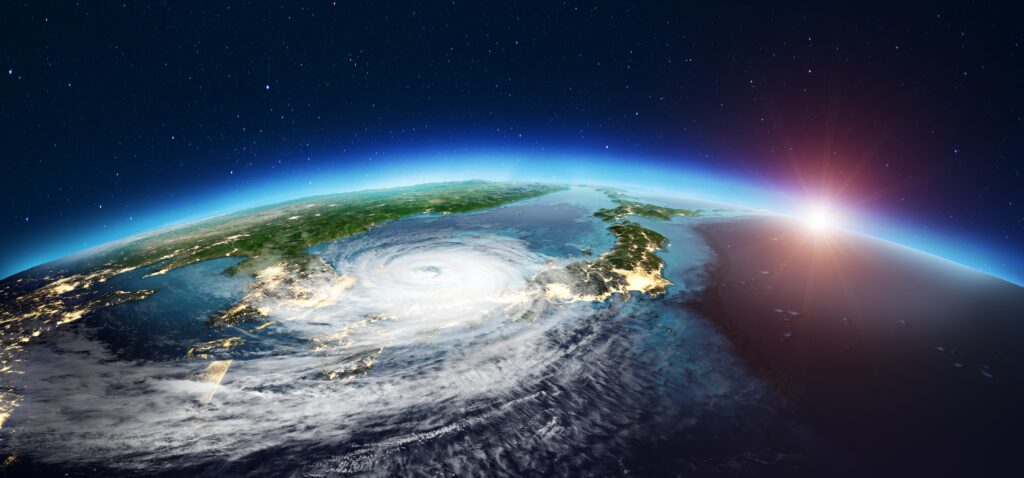
Temporary storage sites could be sometimes affected by strong wind like typhoons and gusty wind.
Especially in recent years, it can be said that the threat of typhoons is accelerating due to the increase in the frequency and intensity of typhoons caused by climate change.
It could hardly happen, that something very heavy is affected, such as container bags with removed soil and waste inside, but sometimes sheets could be torn, or relatively light equipment and containers could be blown out due to strong wind.
Therefore, especially equipment on vulnerable places to wind and something with light weight are fixed with ropes or covered with sheets in advance, to prevent them from being blown out by wind.
In addition, as is the case with other natural phenomena, after the strong wind passes by, workers patrol the temporary storage sites to check whether something wrong has happended or not.
Earthquake

After the Great East Japan Earthquake in March 2011, the number of earthquakes has been decreasing over time, but even now, nearly 12 years after the earthquake, relatively large earthquakes sometimes still occur.
So far there have been no cases of severe damage to the temporary storage sites caused by earthquakes, but when an earthquake with a seismic intensity of 4 or higher occurs, follow-up checkups are conducted to ensure that there are no problems for the facilities of the temporary storage sites.
Summary
This article covers the management of the temporary storage sites, in ordinary and emergency situation, for example, natural disaster occurs.
Together with the measures from structural viewpoints covered in the previous article, the temporary storage sites are tried to be managed safely as much as possible.
However, even the necessary measures are taken, sometimes natural events beyond our imagination occur, so the measures need to be improved every time it happens.
Full-scale decontamination activities were completed by the end of March 2018, and in the Fukushima Prefecture full-scale transportation projects were almost completed by the end of March 2022, except for the Difficult-to-Return Zones.
With this progress, the number of the temporary storage sites is gradually decreasing, but depending on the scale of decontamination in Difficult-to-Return Zones, it could be possible that the temporary storage sites need to be continuously managed.
The process after the temporary storage sites would be covered in another article.
By the way, above-mentioned contents are summarized in the following videos.
It would be appreciated to visit them at your convenience.
– Japanese version
– English version
You can read the same article in Japanese here.
Thank you very much for reading this article.
See you next time!
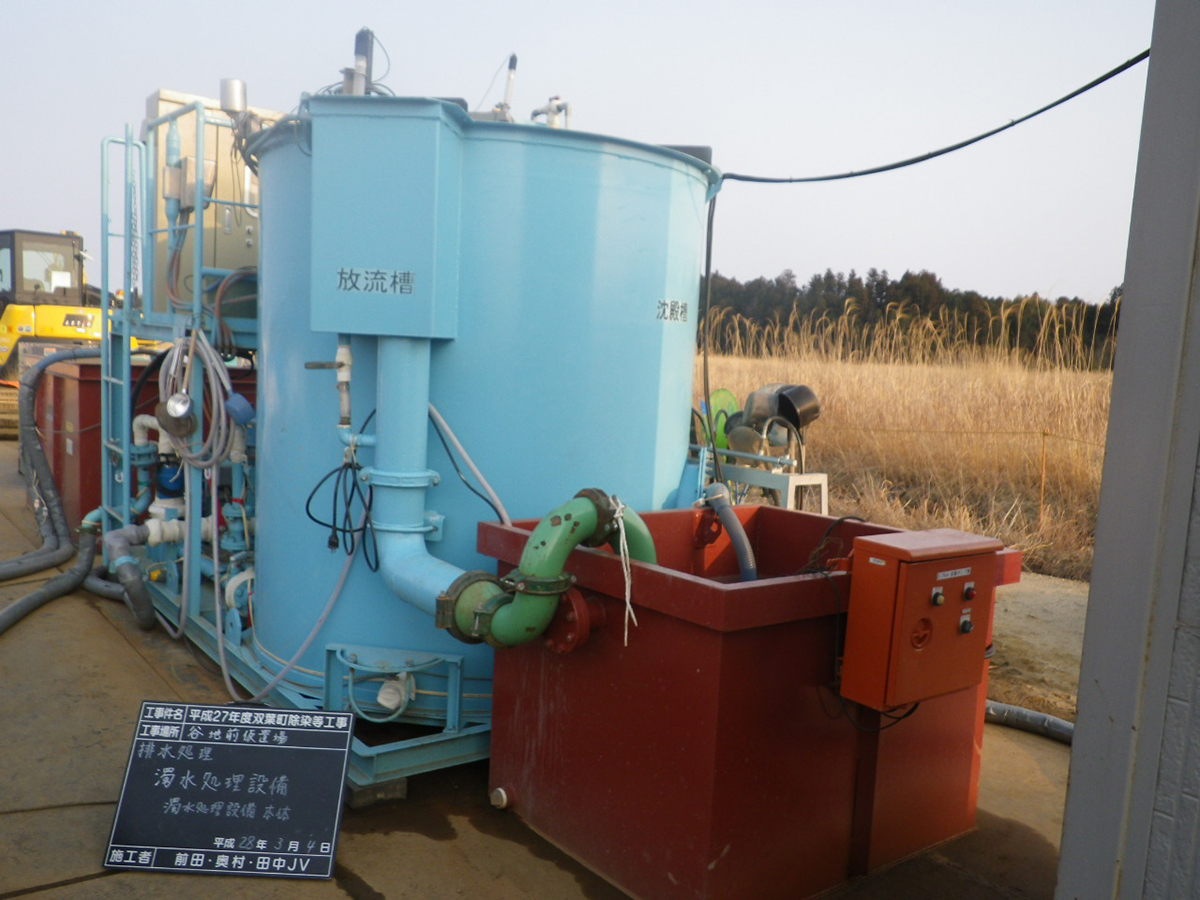


コメント